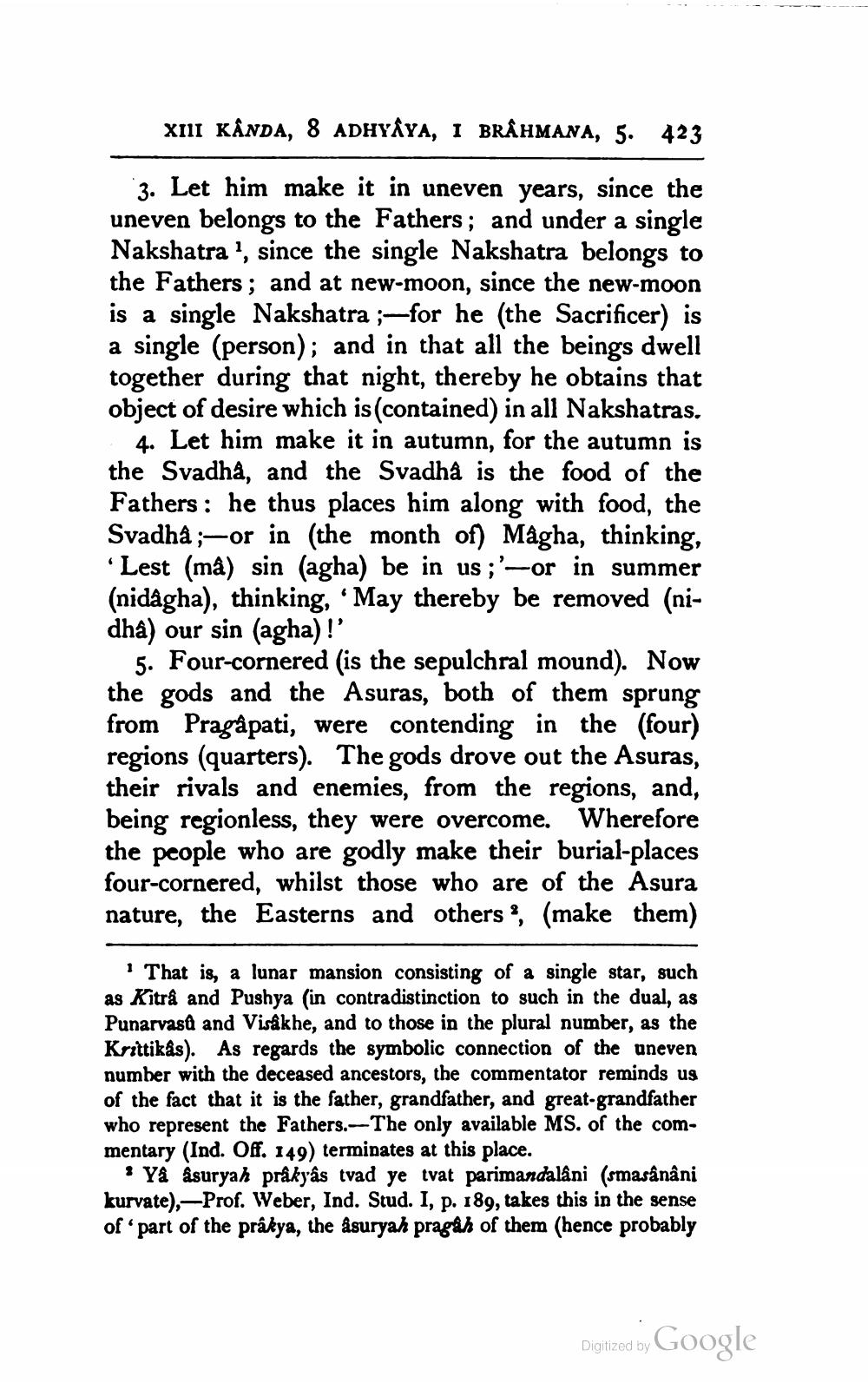________________
XIII KÂNDA, 8 ADHYAYA, I BRÂHMANA, 5. 423
3. Let him make it in uneven years, since the uneven belongs to the Fathers; and under a single Nakshatra ', since the single Nakshatra belongs to the Fathers; and at new-moon, since the new-moon is a single Nakshatra ;--for he (the Sacrificer) is a single (person); and in that all the beings dwell together during that night, thereby he obtains that object of desire which is (contained) in all Nakshatras.
4. Let him make it in autumn, for the autumn is the Svadha, and the Svadha is the food of the Fathers : he thus places him along with food, the Svadha ;-or in the month of) Mâgha, thinking,
Lest (mâ) sin (agha) be in us; -or in summer (nidagha), thinking, ‘May thereby be removed (nidha) our sin (agha)!'
5. Four-cornered (is the sepulchral mound). Now the gods and the Asuras, both of them sprung from Pragàpati, were contending in the (four) regions (quarters). The gods drove out the Asuras, their rivals and enemies, from the regions, and, being regionless, they were overcome. Wherefore the people who are godly make their burial-places four-cornered, whilst those who are of the Asura nature, the Easterns and others?, (make them)
That is, a lunar mansion consisting of a single star, such as Kitra and Pushya in contra distinction to such in the dual, as Punarvasů and Visakhe, and to those in the plural number, as the Krittikas). As regards the symbolic connection of the uneven number with the deceased ancestors, the commentator reminds us of the fact that it is the father, grandfather, and great-grandfather who represent the Fathers.--The only available MS. of the commentary (Ind. Off. 149) terminates at this place.
Yå åsuryah pråkyâs tvad ye tvat parimandaláni (smasânâni kurvate),—Prof. Weber, Ind. Stud. I, p. 189, takes this in the sense of part of the prákya, the asuryah pragåh of them (hence probably
Digitized by
Digitized by Google




